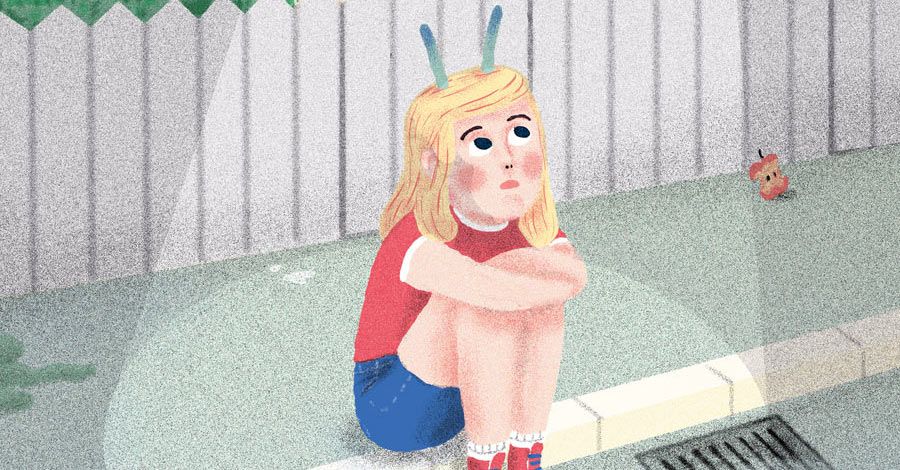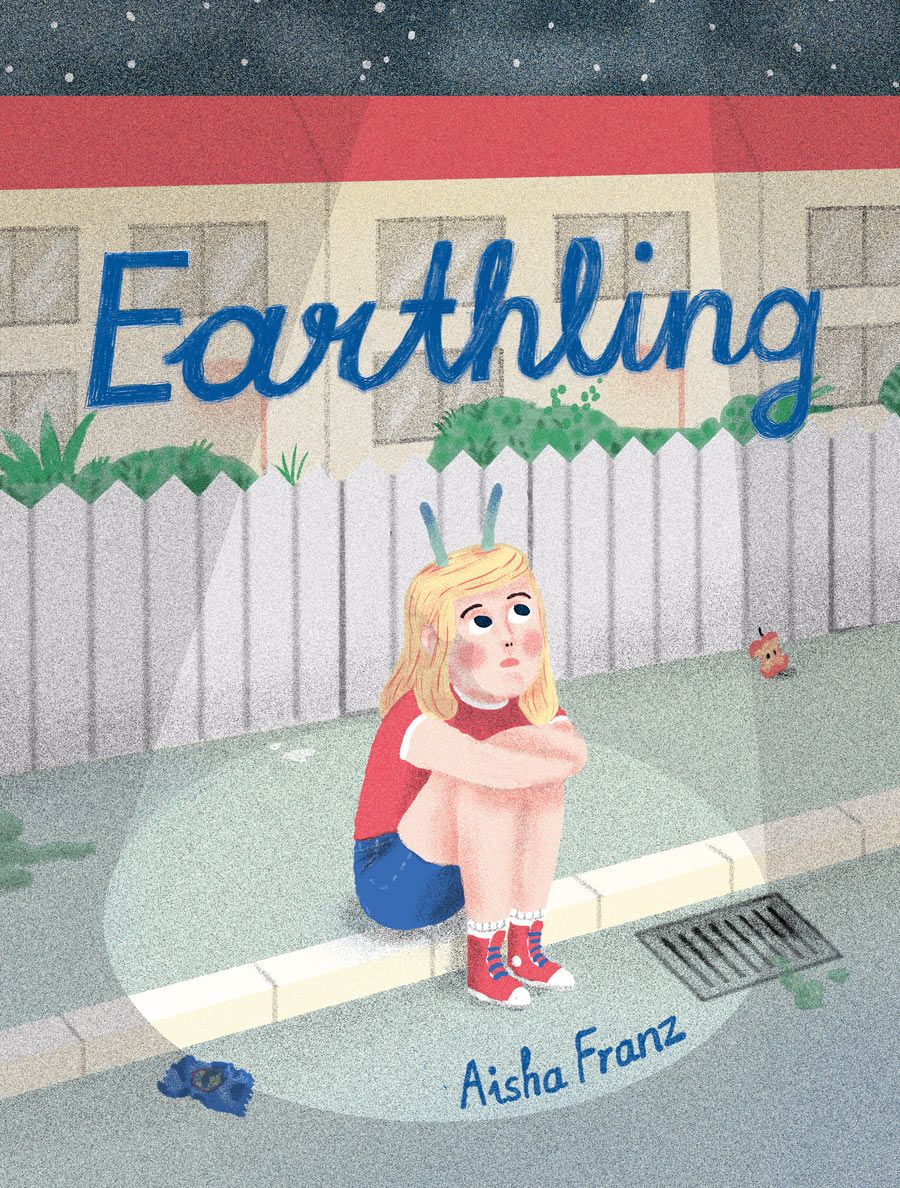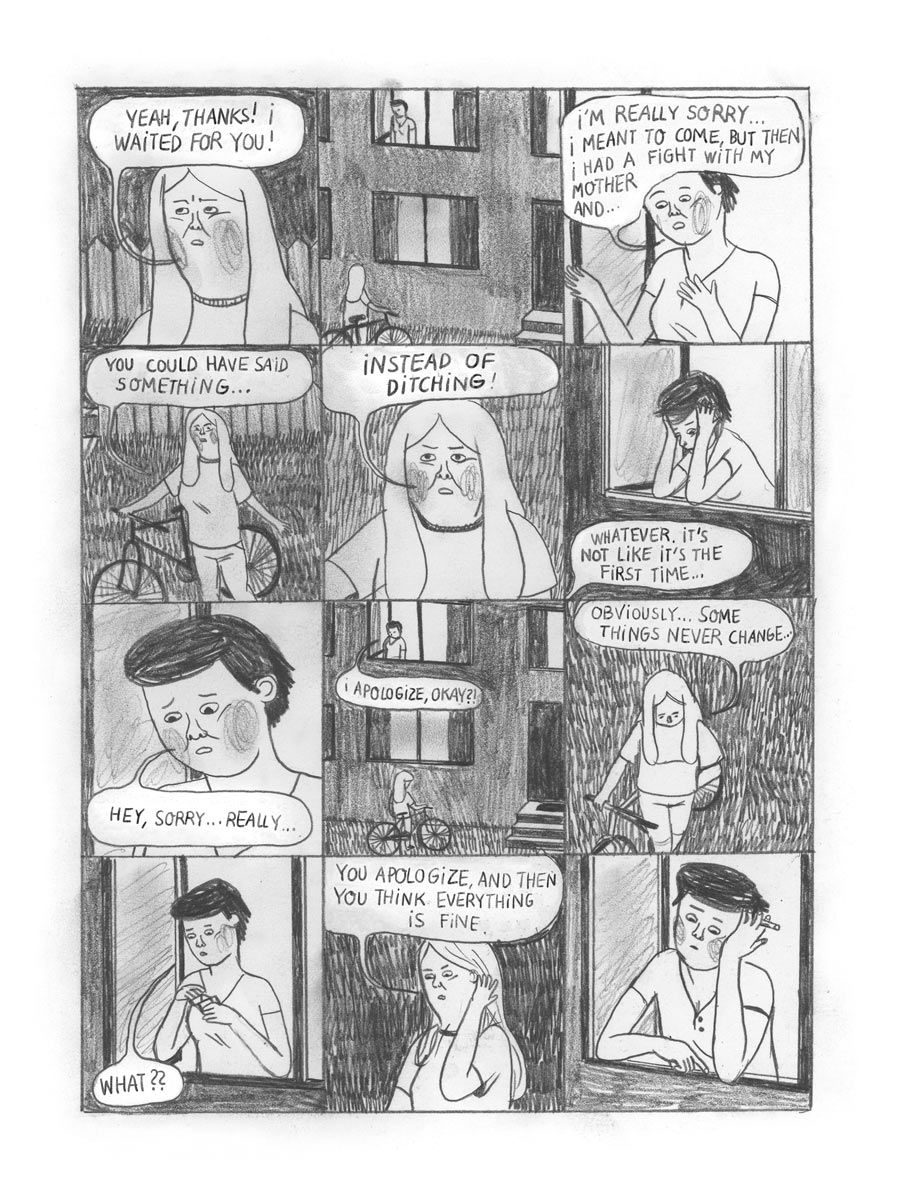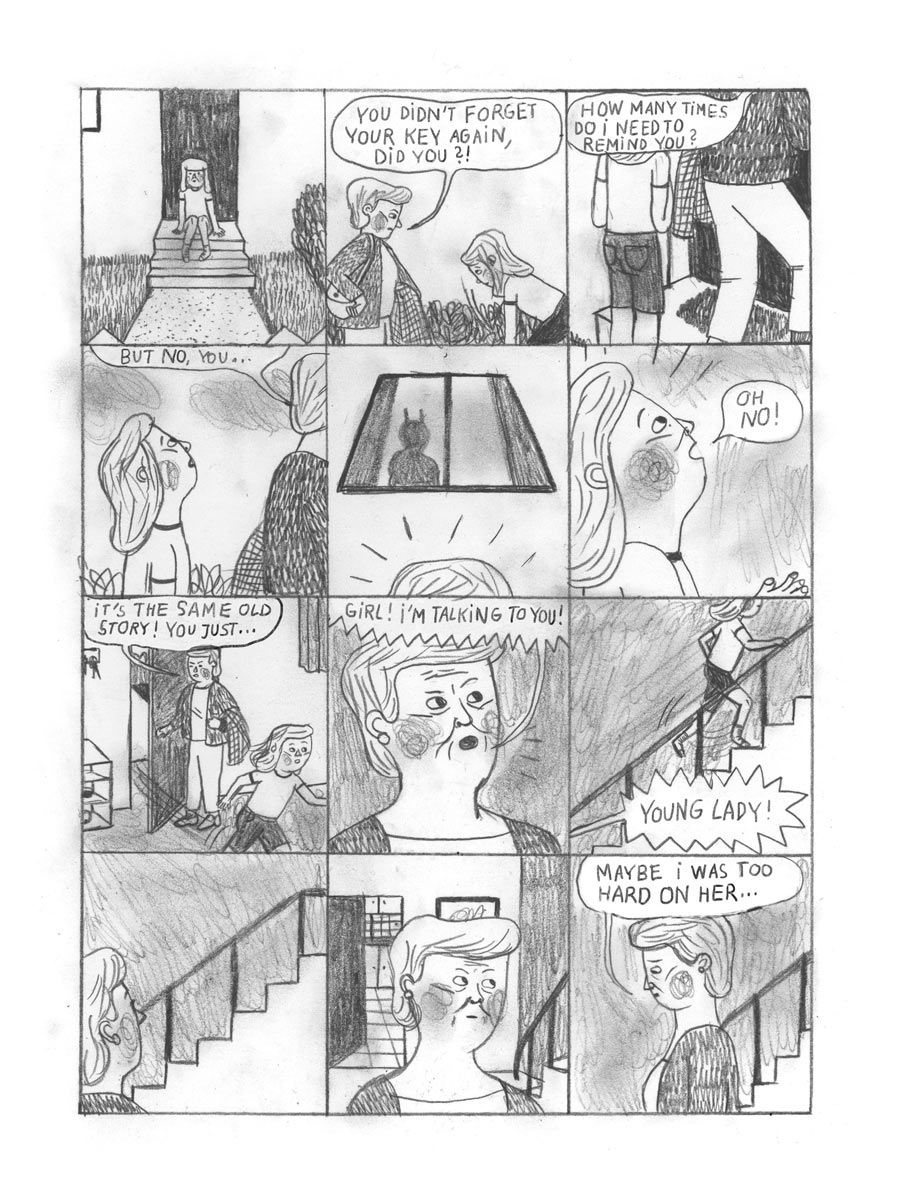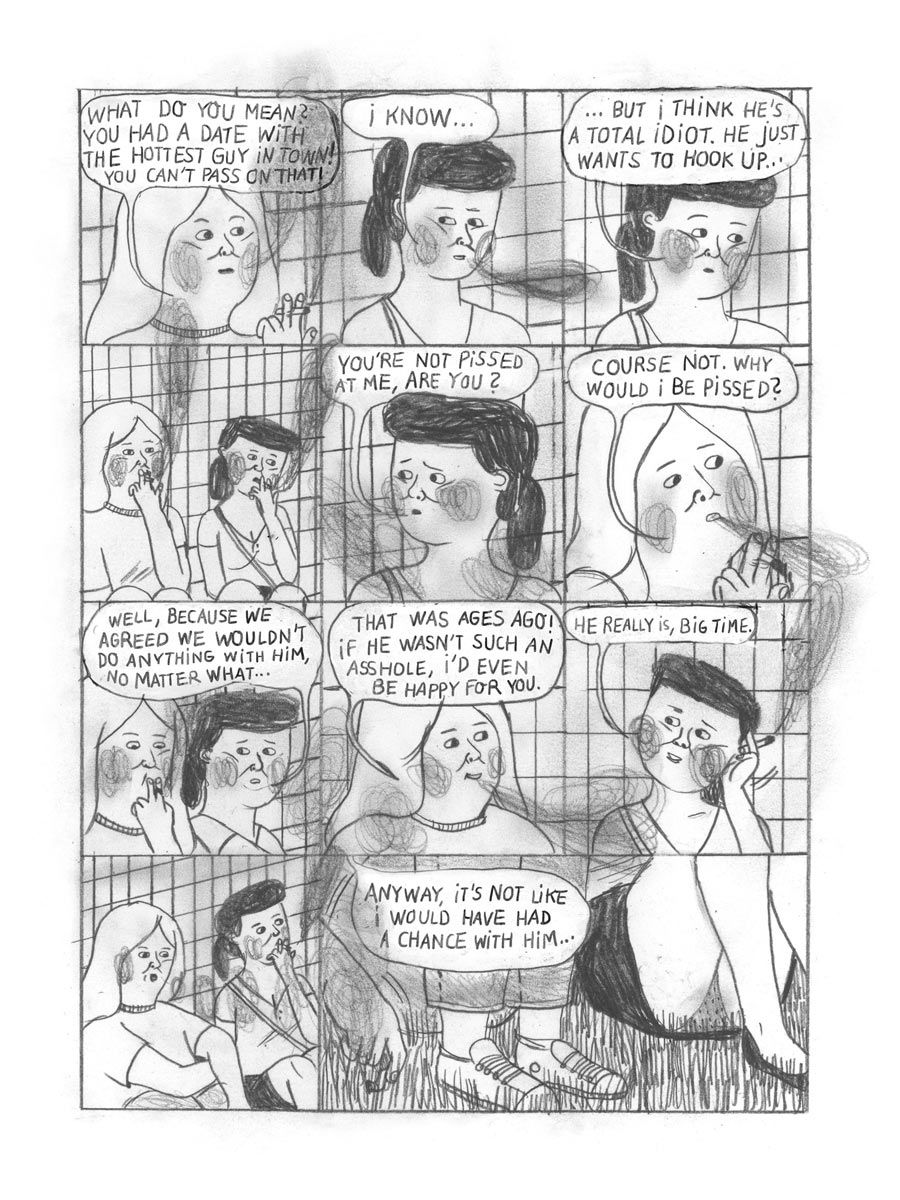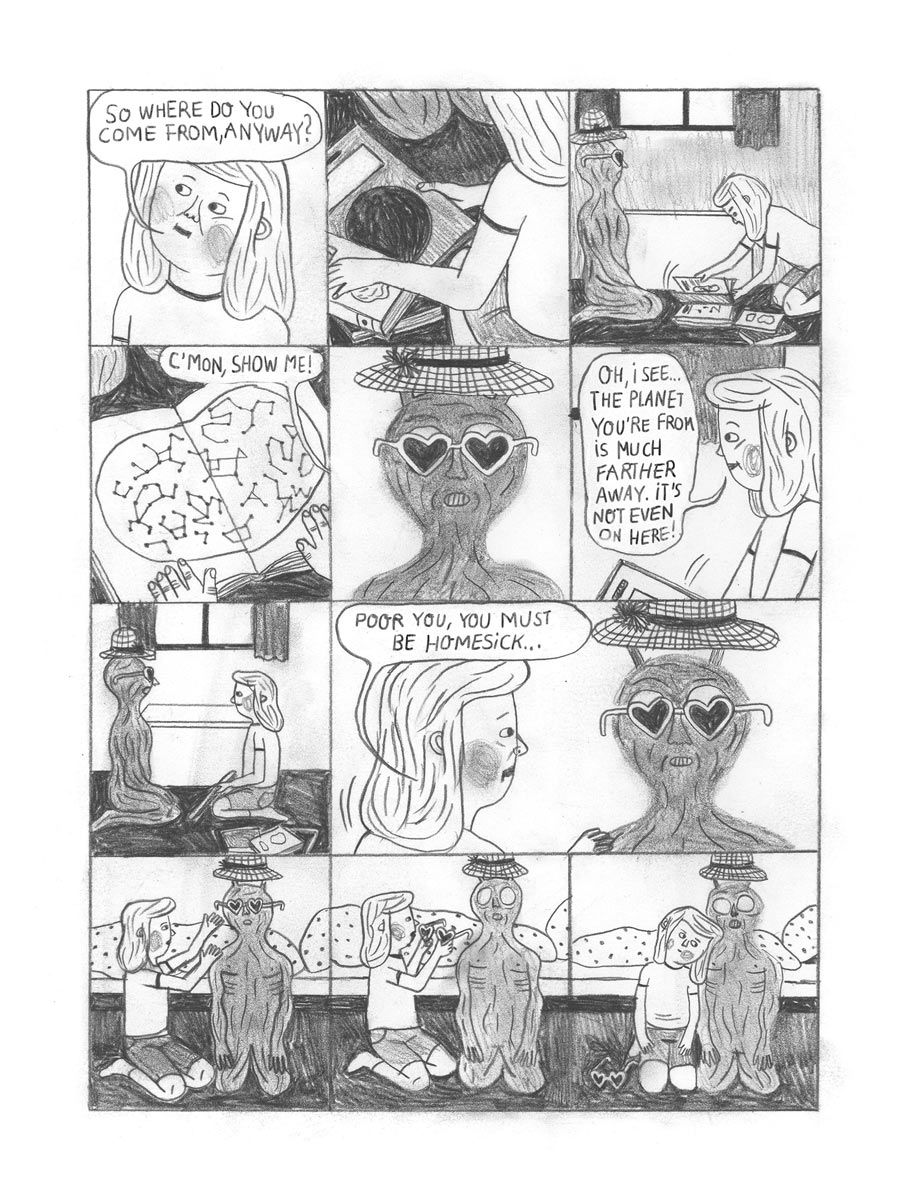Formerly part of the comics collective The Treasure Fleet, German cartoonist Aisha Franz is the author of numerous comics and two graphic novels, which have been translated into many languages. Her first English language graphic novel is "Earthling," which is out now from Drawn and Quarterly.
Franz spoke with CBR about "Earthling" in advance of her recently wrapped North American tour, sponsored by D&Q and the Goethe-Institut, which found her appearing at Librairie D&Q in Montreal and Comic Arts Brooklyn. We discussed her current release's combination of fiction and autobiography, its rather amorphous origins and how her tendency to escape into fantasy worlds in her early life now manifests itself through her comics.
CBR News: I was curious about your background. I know you went to school for illustration, but were you always interested in making comics?
Aisha Franz: I was always interested in drawing and telling stories, but I didn't read comics when growing up, and actually discovered them while in art school. It made perfect sense: I'm too impatient for animation, and I'm not good at writing.
How do you describe "Earthling?"
It's a fictional story with autobiographic elements about two girls and their mother, who are kind of stuck in a suburb. Taking place in 24 hours, it shows how each of them is dealing with very personal issues that will affect their near future, but also their incapability to connect with the world. It's about being and feeling like a weirdo, about dreams and failure, about sex, anxiety, love and aliens.
When you started, did you have the shape and structure of the book in your mind, or was that something that evolved as you worked on it?
"Earthling" was my first larger comic-project, so it started off more like an experiment with not very big or clear expectations. I had no idea of how long the story was going to get or what it would actually be about. There were only the characters in the beginning, who then started telling their stories almost by themselves. I ended up being more like an observer keeping everything in a sort of "shape." I realized that that's the part I enjoy most about making comics: They can surprise you. I'd find it boring if I knew the whole thing from beginning to the end.
How did you come up with the idea of the balloon, which I thought of as red, and the tag on it?
The whole book is full of little details, things I've seen or experienced myself that might be a little "off" or strange. When I was little, people used to send messages with balloons -- it was a thing, like a message in a bottle, kind of. Kids would write their addresses on the tag, for example, and the person who'd find it could write them, then eventually become pen pals. It worked really good so it was always very exciting to actually find a balloon-message. I thought of it as a nice opening for the book, since I had to find a reason why Mädchen would go to the fields. In this case though, the message ends up being a hoax.
I am curious how you designed the alien and those small details of where Mädchen's imagination goes like the radio and how it plays out.
The actual trigger for the whole story was a drawing in my sketchbook of a girl and a very stupid-looking alien. I just liked the idea of a kid interacting with a passive, dumb-looking, weird creature that's just there. I found it funny. So the alien just ended up looking like this, the most simple version of an extraterrestrial I could imagine, also inspired by my own childhood-drawings. I don't really remember how the radio happened -- I guess it was just there. Maybe I felt like the alien needed some kind of old-school-tool.
I kept thinking about how this is about the ways that so many of us escape. For children, it's about imagination and fantasy. For teenagers, it's about either retreating into childhood or trying to join the adult world, and for adults, it's about the past. Were you consciously thinking of this idea and how these ideas play out in the three characters?
Sure. This kind of escape into fantasy worlds always was a huge part of my life, and it still is, only now it manifests through my work. First of all, I like the general idea that there's like a parallel, slightly-off reality we can sometimes sense. Reality and dream are always very close together, sometimes even closer than we think.
Second, like you said, we all have these imaginary worlds we dive into in order to hide away or live our dreams, but then I also see it more like a mirror to our emotions and how we deal with certain situations -- emotions we cannot communicate or which we don't even understand ourselves. Our imagination could help us to reflect on things. Third, playing with those elements makes a storytelling more interesting in my opinion. I didn't want to just show actual real-life events, and also, the medium itself serves as a great playground where you can just experiment and, for instance, very easily mix fantasy and reality.
What is your process like, and does it change in making a graphic novel as opposed to mini comics or shorter work?
The process always changes, just like the style and themes. I always need to keep moving. That's probably the reason why I make mini comics and other small projects besides working on a book. Usually, I would start off with a simple idea, maybe an image, a character or a situation. Then, if it feels like there's more to it, I would start making loose drawings which start revealing what a story around this detail could be about. It's more about exploring than planning or structuring a story. Of course, there are always moments of confusion, when there is loss of control and sight when doing a longer project. But sometimes you just have to keep going, even if you hate it for a moment. Short comics are less of an effort because there's less risk. They're great to keep developing your work and take it to new levels.
I'm curious what the comics scene in Germany is like.
That's a hard question -- I don't really know what you expect to hear. If you mean the people, I'd say they're just like everywhere else and as diverse as everywhere else. If you mean the "style," I can only say that it's also very diverse, especially since there are much more people now making comics, who come from other contexts and interests, as opposed to more "classic" comic or manga approaches.
You're part of a comics collective, The Treasure Fleet. What is that like and what do you do?
The idea of The Treasure Fleet was more to unite for distribution purposes. It makes more sense to move around at fairs and festivals in a group than by yourself. For practical reasons, so you can share costs and tables, but also a group allows you to be more "visible," everyone can profit of everyones's network. And the community of course: it's important to have people around you to share with.
Unfortunately The Treasure Fleet doesn't exist any more as such, but it's just a closure of one chapter and something else is going to emerge from that.
What are you working on next?
I'm currently working on a graphic novel. Again, it will be part personal and part fictional, just like "Earthling." But maybe a little bit more "mature." The protagonists from "Earthling" had to grow up, finally.
Do you have any plans for your North American tour of Canada and the U.S. in November?
Well, there's going to be an interview/talk/reading in Toronto and Montreal, and then I'm going to be at CAB (Comic Arts Brooklyn) signing and also taking part at a panel discussion with Jillian Tamaki and Lisa Hanawalt.
UPDATE 11/13/2014 1:15 PM PT: The original version of this article erroneously referred to Aisha Franz's book tour as yet to occur; it ended this past weekend with an appearance at Comic Arts Brooklyn.

